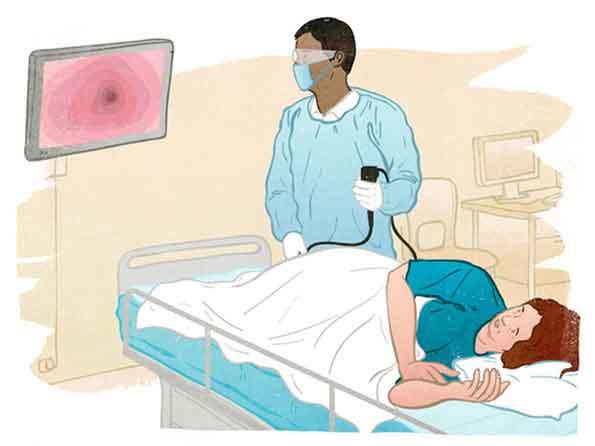Screening Rates for Several Cancers Miss Their Targets
, by NCI Staff
Screening rates for breast, colorectal, and cervical cancer are lagging behind target rates set by the Healthy People 2020 program, according to a new study by researchers from the Centers for Disease Control and Prevention (CDC) and NCI.
While rates for breast and colorectal cancer screening were stable over the period of the study—2010 to 2013—rates of cervical cancer screening fell, the authors found. The findings were published May 8 in Morbidity and Mortality Weekly Report.
Healthy People is a federally led effort that establishes 10-year national objectives for improving the health of all Americans. Screening target rates included in Healthy People 2020 are based on the following recommendations from the U.S. Preventive Services Task Force (USPSTF):
- Breast: Among average-risk women ages 50 to 74, a mammogram every 2 years
- Cervical: Among women ages 21 to 65 who have not had a hysterectomy, a Pap test every 3 years
- Colorectal: Among men and women ages 50 to 75, a fecal occult blood test (FOBT) annually, a sigmoidoscopy every 5 years and FOBT every 3 years, or a colonoscopy every 10 years
To conduct the study, Susan Sabatino, M.D., of the CDC’s Division of Cancer Prevention and Control, and her colleagues used data from the 2013 National Health Interview Survey (NHIS), a nationally representative health survey of adults in the United States.
Although screening rates were below target levels (see chart below), in general, people with higher levels of education and income had higher screening rates. And while there were disparities in rates for certain screening tests associated with racial/ethnic status, a lack of health insurance or usual source of care was most commonly associated with lower screening rates.
| Cancer Type | Health People 2020 Target Rate | Overall Screening Rate in 2013 |
|---|---|---|
| Breast | 81.1 percent | 72.6 percent |
| Cervical | 93.0 percent | 80.7 percent |
| Colorectal | 70.5 percentt | 58.2 percent |
For mammography, for example, 81.2 percent of women who had a college education and 81.8 percent of women whose annual income was more than 400 percent of the poverty threshold had been screened within the prior 2 years, compared to 38.5 percent of women who didn’t have health insurance and 29.7 percent of women who lacked a usual source of medical care.
Additional research is needed to understand why the percentage of people receiving these three recommended screening tests is not increasing, the authors wrote.
In particular, the findings mark a significant change for colorectal cancer screening, which for many years had been steadily increasing, explained study co-author Carrie Klabunde, Ph.D., of NIH’s Office of Disease Prevention.
Data from the 2015 NHIS, which won’t be available until June 2016, should help to determine whether colorectal cancer screening rates really are plateauing or if the 2013 results were just a short-term outcome, said Dr. Klabunde, who was with NCI’s Division of Cancer Control and Population Sciences when the study was conducted.
Future surveys should also help to determine whether the drop in cervical cancer screening rates is real, she continued, or if it is due to “a substitution effect,” with women being screened at longer (5-year) intervals with both the Pap test and HPV DNA testing, as 2012 guidelines recommend.
“We have to continue to be vigilant in terms of monitoring screening rates and continue to look for ways to provide screening services to the right people at the right intervals,” Dr. Klabunde stressed. “Reaching out to those with limited resources and less access will be an ongoing need.”
